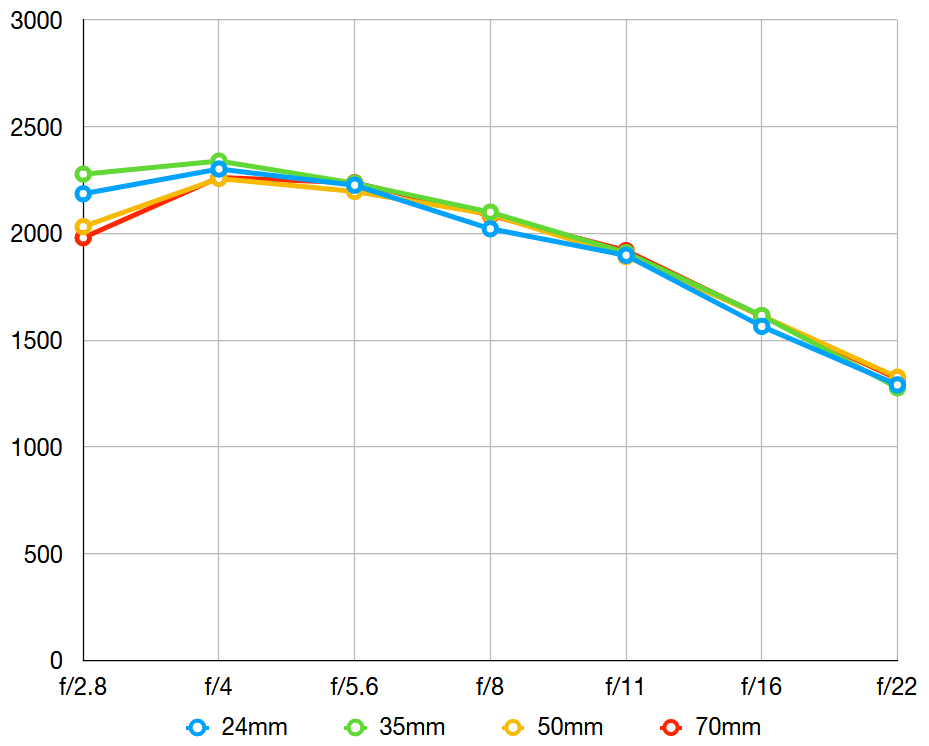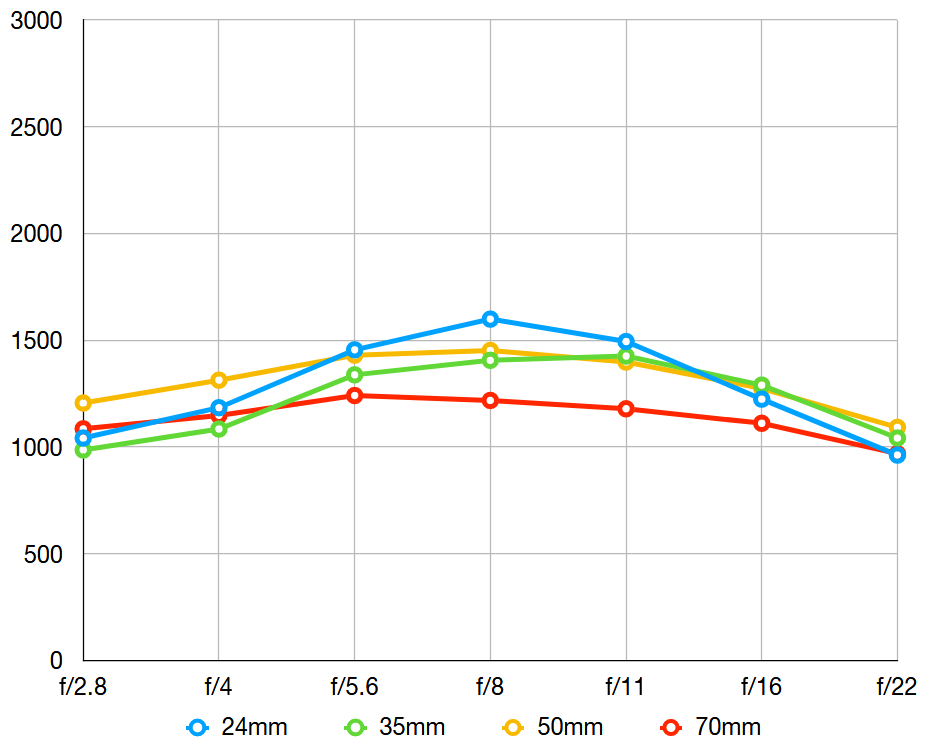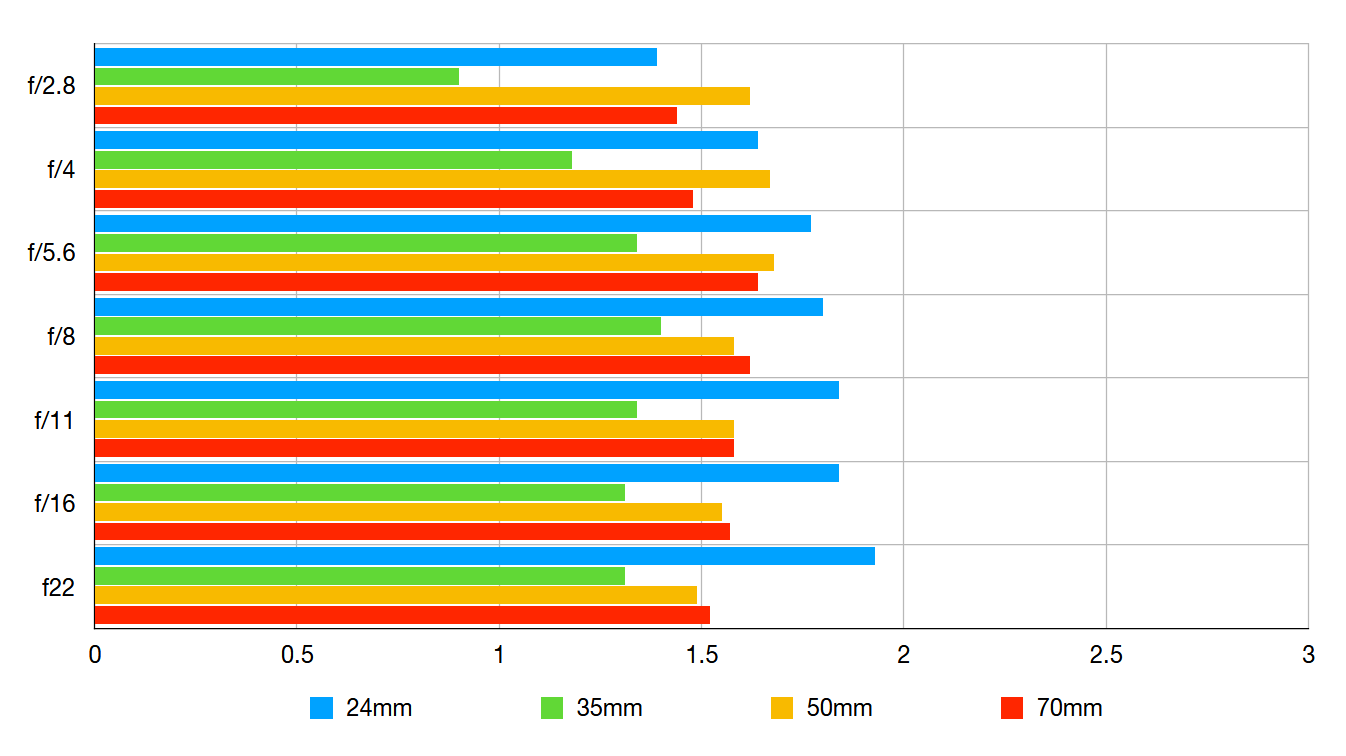Digital Camera World Verdict
Canon’s most important RF mount trinity lens is here to prosthelytize the benefits of the EOS R system – and it will have most users singing 'Hallelujah' all the way to the nearest camera store. It’s snappy, it’s sharp, it’s stabilized and it even suppresses focus breathing… but it's a little rough around the edges, and at this price point that's enough to stop it short of greatness.
Pros
- +
5-stop Image Stabilizer
- +
Improved minimum focus
- +
No focus breathing
Cons
- -
Hefty price tag
- -
Average edge sharpness
Why you can trust Digital Camera World
Much has been written and more has been said, good and bad, about Canon’s full-frame mirrorless camera since its release in October 2018, but one criticism went unanswered for almost the first 12 months: ‘there are no proper lenses’.
It’s been a familiar refrain from early adopters and system skeptics alike; the Canon EOS R has relied almost exclusively on the crutch of EF-mount lenses since its launch. While the company has done an admirable job of fleshing out the Canon RF lens roadmap, the lack of the three ‘trinity’ zoom lenses has been a hard one to pave over.
The company did, in fairness, release the Canon RF 28-70 f/2L USM – but that hulking, super-specialist optic was never going to appease the everyman. Thankfully, then, Canon has at last given us the RF 24-70 f/2.8L – the standard zoom that everyone has been waiting for, along with the wide-angle trinity lens, the Canon RF 15-35mm f/2.8L USM.
A 24-70mm f/2.8 is arguably the most important lens in any manufacturer's lineup, if it wishes to be taken seriously by enthusiasts and professionals alike. Fortunately Canon has delivered a terrific standard zoom lens that's a premium performer for both stills and video shooting – although at this price point, otherwise minor criticisms are amplified.
Canon RF 24-70mm f/2.8L IS USM: Specifications
Full-frame compatible: Yes
Effective focal length: 24-70mm
Image Stabilizer: 5-stop, hybrid
Minimum focus distance: 0.21m (at 24mm) / 0.38mm (at 70mm)
Max magnification factor: 0.3x (at 32mm)
Manual focus override: Electronic
Filter size: 82mm
Weather seals: Yes
Supplied accessories: None
Length: 125.7mm
Canon RF 24-70mm f/2.8L IS USM: Build and handling
The Canon RF 24-70mm f/2.8L IS USM is longer than its DSLR counterpart, the Canon EF 24-70mm f/2.8L II USM, which measures 113mm. Still, the two lenses are comparable in size – and the RF iteration retains the 82mm diameter of its predecessor, meaning that you can port over your existing filters. (The same is true of the Canon RF 15-35mm f/2.8L IS USM, which also has an 82mm diameter.)
The difference here, of course, is that the RF version introduces Canon’s 5-stop Image Stabilizer – along with the RF 15-35mm, it is the first “wide-angle” L-series lens to incorporate the stabilization.
The best camera deals, reviews, product advice, and unmissable photography news, direct to your inbox!
It also shares the honor, with its new sibling, of being the company’s first fast-aperture zoom lens to feature Nano USM – Canon’s premium tier of focus motor, which is able to muscle the large glass elements in the RF lens with both speed and precision. However, it also does so with stealth-like levels of noise, making it equally adept for shooting video.
This is an inherent consideration with all of Canon’s RF lenses, given the customizable nature of the control ring. While it can be programmed to control anything from white balance to metering modes, for videographers the most logical choice is to make it a manual aperture ring – which can be ‘de-clicked’ by Canon service centers for silent operation.
Despite being slightly longer than its EF precursor, the RF 24-70mm feels very similar in the hand. It’s substantial and sturdy yet nimble and responsive, whether you’re focusing automatically or manually, with a pleasingly damped zoom ring – which has an extra trick up its sleeve…

Canon RF 24-70mm f/2.8L IS USM: Performance
Like the Canon RF 24-105mm f/4L IS USM kit lens, the RF 24-70mm possesses a focus breathing suppression system. As many videographers will tell you through gritted teeth, most zoom lenses ‘breathe’ as you push in or out – meaning that the angle of focus changes as you do so.
The fact that the RF 24-70mm doesn’t breathe is a very fine feather to its bow – it’s easy to forget that a standard lens isn’t just important for stills, but equally important for shooting video. To have suppression baked into the lens, along with 5-stop stabilization, makes this very appealing indeed for cinematographers.
The lens performs excellently for cinematography work. The Nano USM focusing system is as close to silent as things get, with fast focus acquisition and super smooth focus following thanks to Canon's class-leading Dual Pixel AF – which also does a fine job in challenging low light conditions such as filming indoors.
While Canon has yet to catch up with the rest of the market in terms of in-body image stabilization, its lens-based IS is quite formidable. Whether shooting at the long end or with slower shutter speeds, it does a sound job of keeping your shots sturdy – ideal for run-and-gun wedding or events photographers working in challenging venues.
In our time with the Canon RF 24-70mm f/2.8L IS USM, it performed like an amped-up version of the EF equivalent – in particular, focus seemed snappier, thanks no doubt to the improved capabilities of the EOS R system and the faster communication enabled by the RF mount.
Even the minimum focus distance has been improved; at the wide end, close focusing is now possible up to 21cm – a substantial improvement from the 38cm of the EF version of the lens. Zooming to 32mm also reaches the RF lens’ maximum magnification of 0.3x, a similar improvement on the EF lens’ magnification of 0.21x (found at 70mm).
However, those looking for Canon to deliver its promises of the RF mount "doing things optically that were never before possible" may be disappointed. In terms of center sharpness there is little to fault, as it could almost cut glass even wide open, but edge sharpness is only average even at the longer end of the range.
While this is fine (perhaps even preferable) for portraiture, those for whom corner sharpness is important won't be as wowed. It's by no means criminal, but the fact is that this is a seriously expensive lens – and one aimed at professionals – so standards are higher.

Canon RF 24-70mm f/2.8L IS USM: Lab tests

Center sharpness
The resolution of this lens in the center of the frame is quite superb. Wide open at f/2.8, it's slightly sharper in the first half of its zoom range, but there's very little in it, and from f/4 onwards there's almost no difference in performance at different focal lengths. Sharpness peaks at f/4, but it's easily sharp enough at f/2.8 that you wouldn't hesitate to use this lens wide open.

Edge sharpness
The RF 24-70mm f/2.8 delivers consistently good edge sharpness but it never quite hits the same level as the center sharpness. Even wide open at f/2.8, the edge sharpness is fair, and at medium lens apertures and short to medium focal lengths its good. The edge sharpness at 70mm remains very average, though, and it's a mildly disappointing performance from a premium professional lens.

Color fringing
Color fringing levels are consistently low across the zoom and aperture range. They're slightly higher at the shortest focal length, as we'd expect, but not by much. The combination of low inherent fringing and the in-camera corrections or lens profile corrections most photographers will use means that color fringing is essentially a non-issue with this lens.
Distortion
Typically for a standard zoom lens covering a wide-angle view up to a short telephoto focal length, the RF 24-70mm f/2.8 exhibits barrel distortion at its widest zoom setting which quickly switches to increasing pincushion distortion as the zoom setting is increased. As with the color fringing, however, the levels are low and any distortion is likely to be corrected completely in-camera (with JPEGs) or in raw processing software with suitable lens profiles.
Canon RF 24-70mm f/2.8L IS USM: Verdict
We were very much hoping that the Canon RF 24-70mm f/2.8L IS USM would be the new yardstick by which all standard zooms are measured by. And while it's frankly a damned fine lens, it's also a damned expensive one – and that means that our lofty expectations haven't quite been met.
Depending on your usage, the issue of middling edge sharpness may not be a factor. Portrait photographers will likely have no problem with unrefined corners, but those intending to put this to general-purpose use for things like landscapes may be a little less forgiving.
That's really more a reflection of the price than the performance, though. In all other respects, this is a lens that anyone – on any system – would be proud to have in their kit bag.
It feels snappier and more responsive than its EF predecessor, and the addition of image stabilization is a real game-changer – especially given that the two (current) EOS R bodies both lack IBIS. Throw in the fact that the lens suppresses focus breathing, this really is an essential professional tool for both stills and video alike.

Read more:
The best Canon RF lenses
Canon RF 15-35mm f/2.8L IS USM
Canon EOS R review
Canon RF lens roadmap: everything we know so far

James has 25 years experience as a journalist, serving as the head of Digital Camera World for 7 of them. He started working in the photography industry in 2014, product testing and shooting ad campaigns for Olympus, as well as clients like Aston Martin Racing, Elinchrom and L'Oréal. An Olympus / OM System, Canon and Hasselblad shooter, he has a wealth of knowledge on cameras of all makes – and he loves instant cameras, too.






